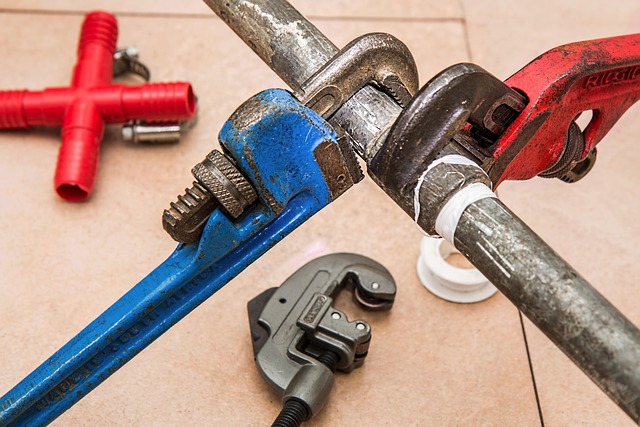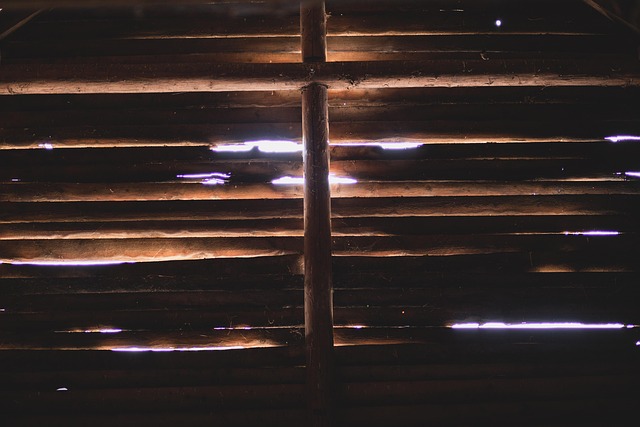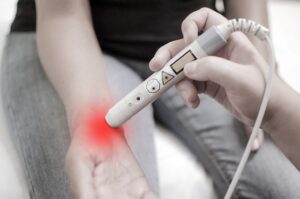Water leaks, often undetected until severe damage occurs, stem from outdated pipes, faulty appliances, or broken water heaters. Prompt leak detection is crucial through awareness of unusual noises, puddles, stains, musty odours, and increased water bills. Regular inspection prevents major plumbing issues and saves costs. Modern leak detection services use acoustic sensors, electromagnetic technology, and AI for non-invasive, precise identification without property damage. Professional experts offer specialized equipment and training, critical in older buildings to avert costly repairs. Proactive strategies include regular pipe and fixture checks, smart systems monitoring water usage patterns, and educating family members on responsible water usage habits. Case studies demonstrate advanced leak detection technologies' effectiveness in diverse settings.
Water leaks can cause significant damage and unnecessary expenses if left undetected. This comprehensive guide delves into the world of leak detection services, equipping you with essential knowledge about common sources and signs of water leaks. From traditional methods to advanced technology, we explore how professionals identify and mitigate these issues. Learn why timely leak detection is crucial and discover prevention strategies to safeguard your home.
Understanding Water Leaks: Common Sources and Signs

Water leaks can be a silent yet devastating issue, often going unnoticed until significant damage has occurred. Understanding common sources and signs is crucial for prompt leak detection, enabling property owners to address the problem before it escalates. Leaks can stem from various sources, including outdated or damaged pipes, faulty appliances like refrigerators or dishwashers, and broken water heaters. Even tiny cracks in these components can lead to substantial water waste and increased utility bills over time.
Signs of a water leak are essential indicators that something is amiss. Look out for unusual noises, such as dripping sounds coming from walls or floors, or persistent puddles forming under fixtures. Water stains on ceilings or walls, musty odours, and unexpected spikes in water usage are also telltale signs. Regular inspection and addressing these signs promptly can help prevent major plumbing disasters and save you from costly repairs.
The Importance of Timely Leak Detection

Water leaks can cause significant damage if left undetected and unaddressed. Timely leak detection is crucial to mitigating potential hazards and financial losses. By identifying leaks early, property owners and managers can prevent extensive water damage to buildings, personal belongings, and even structural elements like foundations and walls. Early intervention also helps in conserving precious resources, as undetected leaks can lead to wastage of thousands of gallons of water over time.
Moreover, prompt leak detection services play a vital role in reducing the financial burden associated with repair and restoration work. The cost of fixing a small leak before it escalates is significantly lower than that of repairing extensive water damage. Regular leak detection checks are therefore an essential component of maintenance routines for any property, ensuring peace of mind and safeguarding against unexpected, costly surprises.
Traditional Leak Detection Methods

In the traditional approach to leak detection, professionals rely on a combination of methods to identify water leaks within plumbing systems. One common technique involves listening for unusual sounds like dripping or rushing noises that might indicate a leak’s presence. This method, often aided by visual inspection, is useful for identifying visible signs of water damage or wet spots on floors and walls. Additionally, trained individuals use specialized tools such as moisture meters to measure humidity levels, which can point towards hidden leaks behind walls or under flooring.
Another traditional method is the use of tracing chemicals, where a small amount of colored dye is introduced into the plumbing system. If a leak occurs, the dye will appear downstream, allowing for easy visualization of the leak’s location. While these methods have been effective, they often require extensive manual searching and can be time-consuming, especially in large or complex plumbing networks.
Advanced Technology in Water Leak Detection Services

Water leak detection services have evolved significantly with advancements in technology, transforming the way leaks are identified and repaired. Modern systems employ sophisticated techniques such as acoustic and electromagnetic sensors that can detect even the smallest leaks by analyzing subtle changes in water pressure and flow patterns. These technologies offer a non-invasive approach, allowing professionals to pinpoint the exact location of a leak without causing any damage to property structures.
Additionally, remote monitoring and smart home integration have revolutionized leak detection. Sensors can now be connected to central systems that provide real-time data, enabling quick response times. With the help of AI and machine learning algorithms, these systems can predict potential leaks based on historical data and unusual patterns, further enhancing preventive measures. This advanced technology not only ensures faster and more efficient leak detection but also reduces the overall impact of water damage on homes and businesses.
Benefits of Professional Leak Detection Experts

Professional leak detection experts bring a host of benefits to homeowners and businesses alike. Their specialized equipment and extensive training enable them to pinpoint water leaks with precision, often in hard-to-reach or hidden areas. This not only saves time but also minimizes damage by allowing for quick repair before the leak causes significant structural or financial harm.
Moreover, these experts can offer valuable insights into a property’s plumbing system, identifying potential vulnerabilities and providing recommendations for prevention. Regular leak detection services are particularly crucial in older buildings where pipes and fixtures may be more prone to failure. By investing in professional services, homeowners and businesses can ensure the longevity of their plumbing systems and avoid costly emergency repairs.
Prevention Strategies: Mitigating Water Loss at Home

Water leak detection isn’t just about identifying problems after they occur; it’s equally crucial for prevention. Implementing proactive strategies can significantly mitigate water loss at home, saving you from costly repairs and wastage. Start by regular inspection of pipes, fixtures, and appliances for any signs of wear or damage. Simple fixes like sealing leaks around faucets, replacing worn-out showerheads, or repairing loose connections can go a long way in preventing water waste.
Consider installing smart leak detection systems that monitor water usage patterns and alert you to unusual spikes. These technologies can detect even the smallest leaks, allowing for immediate action. Additionally, educating every family member about responsible water usage practices, such as turning off faucets when not in use and taking shorter showers, fosters a culture of conservation that further reduces the risk of leaks.
Case Studies: Successful Leak Detection Missions

In the realm of water leak detection services, case studies serve as powerful tools to demonstrate expertise and success rates. These real-world scenarios showcase the practical application of advanced leak detection technologies, highlighting their effectiveness in diverse settings. For instance, a recent mission involved a large commercial building where subtle water droplets were detected through sophisticated acoustic sensors, pinpointing a hidden pipe fracture before it caused significant damage.
Another successful case highlights a residential area where a combination of infrared cameras and ground-penetrating radar successfully located leaks beneath a heavily landscaped garden, minimizing disruption to the surrounding environment. These examples underscore the versatility and precision of modern leak detection methods, ensuring efficient resolution of water loss issues, whether in commercial or residential properties.
